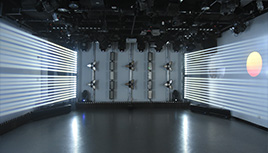Wireless Control Systems for Modern Stage Lighting
2025-02-09 Post By: Longmangroup
In the dynamic world of stage production, the integration of wireless control systems has revolutionized lighting design, offering unprecedented flexibility, efficiency, and creativity. These advancements have significantly enhanced the capabilities of stage lighting, particularly in the realm of LED stage lights.Enhanced Flexibility and Mobility
Traditional wired lighting setups often constrain designers with fixed placements and complex cabling. Wireless control systems liberate designers from these limitations, allowing for the seamless repositioning of LED stage lights to achieve desired effects without the hassle of reconfiguring wiring. This mobility is especially beneficial in dynamic performances where lighting needs to adapt quickly to changing scenes.
Simplified Setup and Installation
The installation of wireless lighting systems is notably more straightforward compared to their wired counterparts. Without the need for extensive cabling, setup times are reduced, enabling faster turnarounds between performances or events. This efficiency is crucial in environments where time is of the essence.
Advanced Control and Synchronization
Wireless control systems facilitate sophisticated control over lighting parameters, including color, intensity, and movement. They enable precise synchronization across multiple LED stage lights, creating complex lighting sequences that enhance the visual impact of performances. This level of control allows designers to craft immersive experiences that align with the artistic vision of the production.
Improved Safety and Aesthetics
By eliminating the need for extensive cabling, wireless systems reduce tripping hazards and contribute to a cleaner, more organized stage environment. This not only enhances safety but also improves the overall aesthetic appeal of the performance space.
Energy Efficiency and Cost-Effectiveness
Many wireless control systems are designed to optimize energy consumption, allowing for precise adjustments to lighting levels and reducing overall power usage. This efficiency leads to cost savings and supports sustainability efforts within the industry.
Comparison: Wired vs. Wireless Control Systems
Take moving head light for example, when comparing wired and wireless control systems for moving head lights, several key differences emerge:
- Installation and Setup: Wireless systems offer a more straightforward installation process, eliminating the need for extensive cabling and reducing setup time. In contrast, wired systems require meticulous planning and labor-intensive installation due to the complexity of wiring.
- Flexibility and Mobility: Wireless systems provide greater flexibility in positioning and adjusting lighting fixtures, allowing for dynamic changes during performances. Wired systems are less adaptable, as any changes in lighting positions necessitate physical adjustments to the wiring.
- Safety: The absence of cables in wireless systems reduces tripping hazards and electrical risks on stage. Wired systems, with their numerous cables, pose higher safety concerns.
- Cost: While wireless systems may have a higher upfront cost, the savings in installation time, labor, and maintenance often offset this over time. Wired systems may appear less expensive initially but can incur higher costs due to complex installation and potential maintenance issues.














